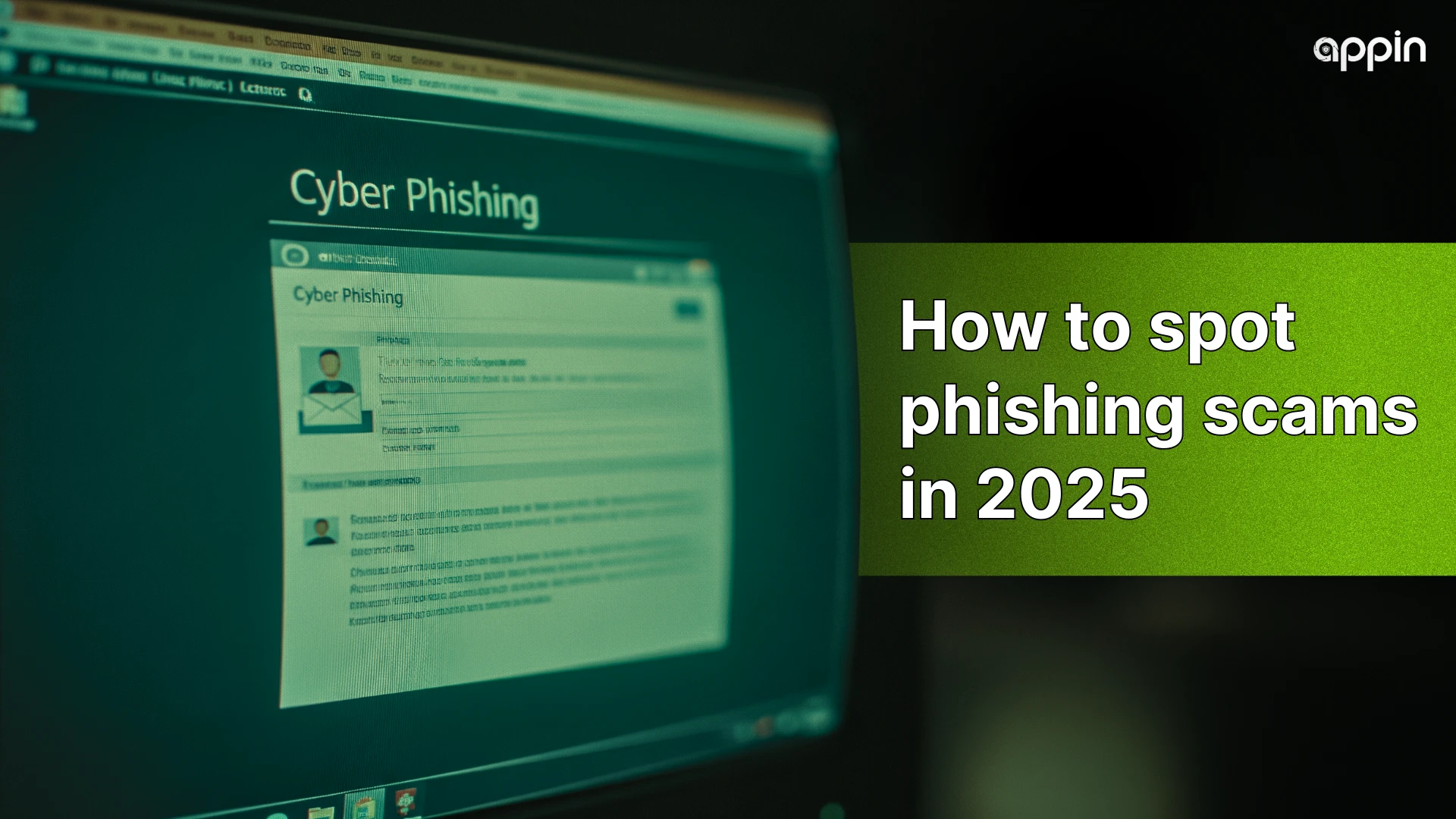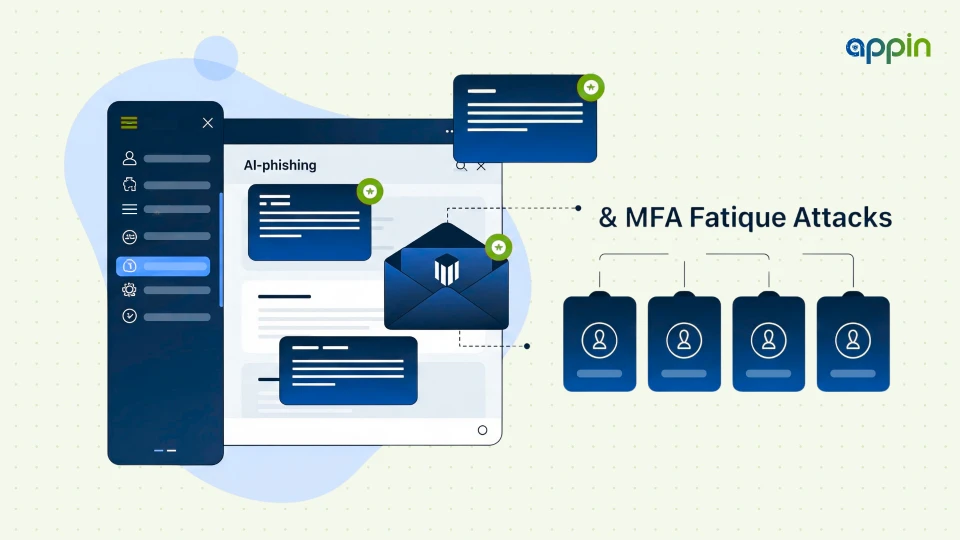Why Phishing is Still the Top Cyber Threat in 2025
Phishing remains the most common cyberattack in 2025 because attackers now use AI, deepfakes, and advanced social engineering to bypass traditional defenses. What makes these phishing attack tricks dangerous is their ability to look more convincing than ever before, targeting people in everyday scenarios.
In India, the threat is particularly high. Students receive fake scholarship emails, job seekers are lured with false offers, and businesses face targeted campaigns designed to steal sensitive data or financial details. Even experienced users fall victim when the messages appear professional and error-free.
The latest phishing attacks in 2025 are no longer limited to email. They use SMS, QR codes, fake cloud portals, and even voice or video deepfakes to manipulate trust.
To protect yourself, it is important to understand how these tricks work. By learning about them, both beginners and professionals can recognize the signs early and avoid becoming victims.
Trick 1: AI-Generated Phishing Emails
In 2025, attackers are using AI tools to create phishing emails that look highly professional, free of grammar errors, and tailored to the recipient. Unlike older scams that were easy to spot due to poor formatting or spelling mistakes, these AI-generated phishing emails appear almost identical to legitimate communication.
Cybercriminals use ChatGPT-like models to write personalized content. For example, if you recently posted about a job search on LinkedIn, you might receive a fake recruitment email that addresses your exact skills. If you work in finance, the message could mention specific banking terms. This level of customization makes phishing attacks harder to detect.
Common red flags still exist:
- Unusual or shortened links hidden behind buttons
- Urgent tone demanding immediate action
- Mismatched sender IDs or suspicious email domains
- Attachments from unknown sources
For learners studying phishing attacks and phishing techniques, these examples show why training must focus on practical analysis, not just theory. AI has raised the quality of scams, but awareness and verification can still stop them. Always pause before clicking, verify senders through alternate channels, and report suspicious emails immediately.
Trick 2: Deepfake Voice and Video Scams
Attackers are now using deepfake technology to create fake audio and video messages that impersonate trusted individuals. In many cases, criminals pose as CEOs, managers, or even family members to trick victims into transferring money or sharing confidential information.
This trend, often called “CEO fraud,” has grown rapidly in India. A manager might receive a video call that looks and sounds like their director, asking them to approve an urgent payment. A student might get a voice message from someone posing as a relative abroad, asking for quick financial help. These scams rely on trust and urgency.
Signs of deepfake phishing scams include:
- Visuals that look slightly distorted or unnatural when the person moves
- Audio that does not perfectly match the lip movements
- Unusual or urgent requests that bypass normal procedures
- Messages that discourage verification through other channels
Among the new phishing attack tricks, deepfakes are especially dangerous because they exploit human emotions. To protect yourself, confirm requests through verified contact numbers or emails, never act on pressure alone, and use company policies that require multiple approvals for sensitive transactions.
Trick 3: Fake Cloud Login Pages
One of the most effective phishing methods in 2025 is creating fake cloud login portals. Attackers design websites that look exactly like Gmail, Microsoft 365, or AWS login pages to steal usernames and passwords.
The trick works because people are accustomed to logging in quickly. A fake email may say your account is locked and provide a link to “restore access.” The page looks identical to the original, but the details you enter go directly to attackers.
This is one of the classic types of phishing attacks with examples that show how social engineering and technical design combine. Students and professionals are both common targets, especially those handling sensitive business accounts.
Ways to spot a fake page:
- Check the URL spelling carefully, even small changes like “rnicrosoft.com” instead of “microsoft.com” are common
- Ensure the website has HTTPS with a valid certificate
- Use two-factor authentication (2FA), which makes stolen passwords less useful
Among today’s phishing attack tricks, this one remains widespread because of how simple and effective it is. Awareness, habit of double-checking links, and 2FA are the best defenses.
Trick 4: QR Code Phishing (Quishing)
Attackers are increasingly using QR codes as phishing tools. This method, known as QR code phishing (quishing), replaces legitimate codes in posters, menus, or emails with malicious ones that lead to fake websites.
For example, a QR code on a restaurant menu could redirect to a fake payment portal. A flyer at a train station might contain a code that installs malware on your phone. Because QR codes are trusted for convenience, people rarely stop to verify them.
The risks include:
- Theft of banking credentials when entering details on fake sites
- Malware installation that monitors your device
- Redirection to unsafe downloads or phishing portals
Safe habits to adopt:
- Verify the source of a QR code before scanning
- Use trusted scanner apps that show the URL before opening
- Avoid codes placed on random posters or public boards
As with other phishing techniques, attackers rely on human behavior, knowing most people act without questioning. Among the latest phishing attack tricks, quishing stands out because it blends into daily activities like shopping or dining. Staying alert and using trusted sources for QR interactions is essential to staying safe.
Trick 5: MFA Fatigue Attacks
Hackers have started exploiting the very tools designed to protect us. In an MFA fatigue attack, criminals flood users with repeated multi-factor authentication push notifications until they finally click approve by mistake. This single approval gives the attacker direct access to accounts.
It works because of human fatigue and distraction. Imagine receiving dozens of login approval requests on your phone late at night or during work hours. Out of annoyance or confusion, many people click approve just to make the notifications stop. Attackers know this psychological weakness and use it against users.
Ways to prevent multi-factor authentication phishing include:
- Number matching MFA: Instead of just clicking approve, users enter a number shown on the login screen, making random approvals useless
- Limiting retries: Organizations should restrict the number of MFA requests within a short time frame
- Educating users: Remind employees and students never to approve a login unless they initiated it
Although this type of phishing attack is less visible than fake emails, it is extremely dangerous because it bypasses passwords and directly targets trust in security tools. Awareness and modern MFA methods are the best defense.
Trick 6: Fake Customer Support Chatbots
Phishers are now creating AI-powered chatbots that pretend to be customer support agents. These bots appear on fake websites or through ads that redirect to cloned bank pages. Victims are asked to “verify” personal or financial details, which are then stolen.
These scams have grown because chatbots are widely accepted in customer service. When users see a chat window offering instant help, they are more likely to engage. This trust is exactly what cybercriminals exploit.
Examples include fake bank chat support or telecom service bots asking for one-time passwords. Some even claim to resolve issues faster if the victim provides account numbers or credit card details.
How to stay safe:
- Always use verified apps or official websites to access customer support
- Avoid clicking chatbot links shared in ads, pop-ups, or unsolicited emails
- Double-check the domain name before entering sensitive data
Among recent phishing scams, these bots highlight how attackers are blending AI with social engineering. Recognizing such AI phishing techniques is crucial. Just like other phishing attack tricks, they target trust and familiarity, making training and vigilance essential.
Trick 7: Spear Phishing on LinkedIn and Job Portals
Spear phishing has become common on LinkedIn and job sites where attackers create fake recruiter profiles. They approach students or professionals with tempting job offers and send links that lead to malware downloads or credential theft.
These scams are convincing because they use industry-specific terms, company logos, and even details from a victim’s profile. For example, a cybersecurity student may receive a job offer that looks aligned with their skills but redirects to a fake login page.
Warning signs of job portal phishing scams include:
- Offers that seem too good to be true
- Recruiter accounts with no real history or network
- Requests for sensitive data like Aadhaar, PAN, or banking details upfront
This method stands out among modern phishing attack tricks because it specifically targets people seeking jobs, making them more likely to click.
Students preparing for real careers should know how to verify recruiters and confirm opportunities directly on company websites. Courses like Certified Ethical Hacking often include practical exercises that show how spear phishing works, helping learners recognize red flags before falling victim.
Trick 8: Smishing and WhatsApp Phishing
Phishing is no longer limited to emails. SMS and WhatsApp messages remain popular tools for attackers because people trust communication on their personal devices. Smishing scams and WhatsApp phishing in India often involve fake delivery updates, bank alerts, or prize notifications.
One growing trend in India is fake UPI refund messages. Victims receive a message claiming a refund is pending and are tricked into entering UPI PINs or clicking malicious links. These links often install malware or redirect to phishing portals.
Examples of smishing scams include:
- Fake courier messages with tracking links
- Bank alerts about blocked accounts
- Prize or lottery winnings requiring small “verification” payments
Defensive steps:
- Always verify senders through official apps or websites
- Do not click on links in unsolicited SMS or WhatsApp messages
- Educate family members, as attackers often target less tech-savvy users
This remains one of the most widespread phishing attack tricks because it reaches people directly on personal devices. Awareness, skepticism, and secure payment practices are the strongest shields.
How to Stay Safe Against Phishing in 2025
Phishing attacks in 2025 are more advanced, but most can be avoided with awareness and discipline. Always double-check URLs and sender addresses before clicking. Never approve login requests you did not initiate. Stay informed about the latest phishing techniques, from AI-generated emails to fake QR codes.
Key safety habits include:
- Using multi-factor authentication carefully with number-matching options
- Verifying offers, messages, and chatbots through official channels
- Educating yourself regularly to recognize new scams
Structured training is one of the most effective ways to stay ahead of attackers. Students and professionals who invest time in courses like Cyber Security Certification, C|EH v13 Ethical Hacker Course, or Bug Bounty Diploma gain both awareness and practical skills to handle phishing threats confidently.
If you want to protect yourself and build a career in cybersecurity, the right training is your next step. Inquire now to start your journey.




